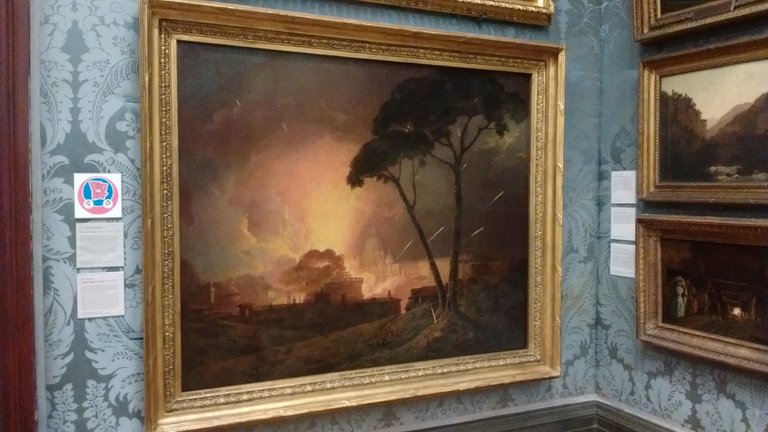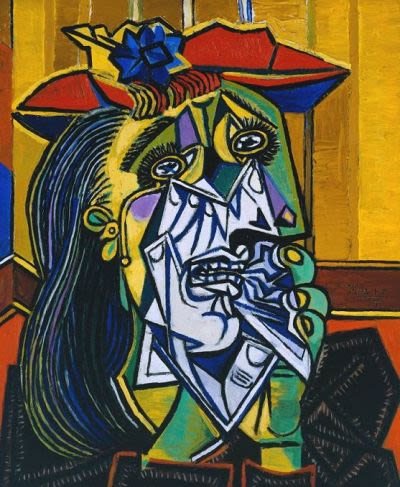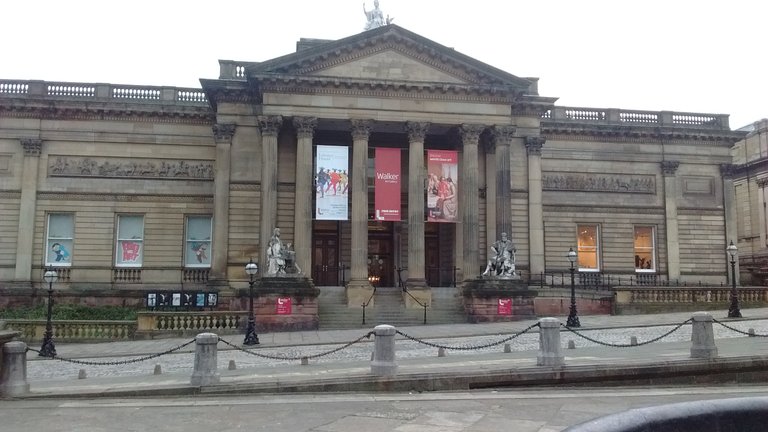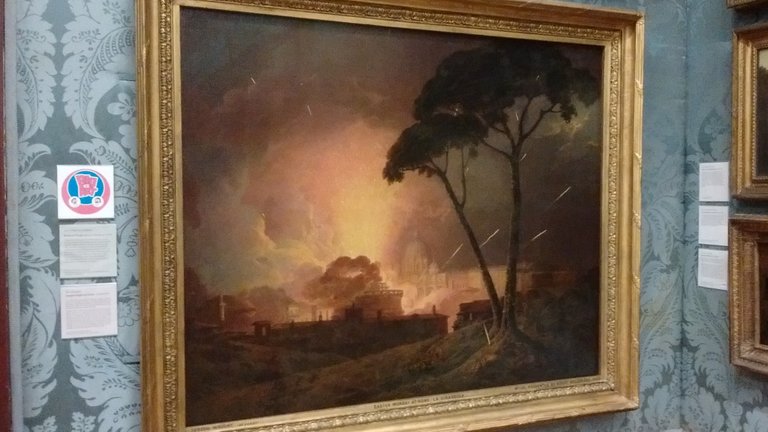Showcase Sunday: A Poet's Muse - Art in Appreciation

Showcase Sunday has dawned again with a beaming Sun rising over the Liverpool skyline for the first time in over a week. So in the spirit of this break in the weather, I thought I would share this illuminating post from over 2 years ago with everyone today.
Hold on to your hats though... this is a bit of a serious literary post. This article explores my process for sparking inspiration for poetry by using art as a muse - it further defines what is meant by the term muse, and finishes with a poem written in response to one of the paintings from the gallery.
If that sounds like your slice of toast, join me exploring the Liverpool walker art gallery for a glimpse inside the crazy mind of a poet.
A Poet's Muse - Art in Appreciation
Sometimes, we as writers, struggle with finding our muse. That intense spark of inspiration, that lightning bolt from the blue which ignites our creative drive. The cambridge english dictionary defines the word muse as:
muse
noun [ C ] UK /mjuːz/ US /mjuːz/ literary
an imaginary being, person, or force that gives someone ideas and helps them to write, paint, or make music
The concept of the muse stretches back to antiquity to the ancient Roman and Greek belief systems. In ancient Greek mythology, the nine muses were gods and goddesses who personified the spirit of the arts such as dance, music and poetry. The idea of an artistic muse was deeply ingrained into the belief system of the ancient Greeks.
In recent history the muse has evolved through different stages, including the Christian divine muse. Some theologians and monks have claimed the virgin mary, or one of the many saints, as a divine muse; visiting them in their dreams and instructing or inspiring them to complete certain tasks or aspire to specific ideals.
In the case of art, throughout the renaissance the muse came to be seen, often, as that divine spark of creativity expressed through a person or sometimes a place or object. Some painters found their muse in the spirit of a place, a tree-veiled mountain slope sweeping majestically down to golden pastures of the river valley below. Some artists, in the impassioned fever of love for a woman of exceptional beauty and character. Pablo Picasso found his muse in The Weeping Woman, inspired by his lover Dora Maar.

Finding the Muse
So, how do we find our muse in modern times? In the age of social media, disposable thoughts flow from us in a torrent of throw away moments, expressed in an instant and forgotten just as quick. I feel that in order to find that expression of intensity for really good poetry to gestate, grow and breathe originality into the world, we need to return to our roots.
I often find my muse in nature; a hike in the wilderness or even a trip to the local park can release the wellspring of creativity, but a place I return to just as often is the local art gallery. By appreciating other artists works, we gain access to a thousand scenes, a million memories and perceptions recorded in an instant from the (social and philosophical) perspective of the artist at that point in history. For me, this is one of the most powerful muses that a poet can approach; becoming lost in a painting, truly wandering in fields of imagination or getting lost in symbolism from a thousand years ago. This is the magical wellspring of creativity that I spoke about above.
The Walker Art Gallery - Poetry in Motion

The Walker art gallery is one of Liverpool's oldest established galleries and has been open for one hundred and thirty years. The gallery houses a range of classical works as well as sculptures and modern art collections.
As a poet, I am a bit of a gallery sprinter. I flit from room to room looking for something to excite both the eye and imagination. I find that this process allows me to find my muse.Usually a painting just hits me and I stop, before standing still and letting it wash through me. I like to take a picture immediately after, then sit and note down my thoughts or any verses that come to mind. The trick is to enter that quiet place, a cessation of thought which allows inspiration to dawn.
Below,I have shared a poem inspired by the painting The Girandola by Joseph Wright. The artist was inspired by a trip to Rome between 1774-75, where he witnessed a firework display that was staged in Rome every easter Sunday. Joseph Wright compared the subject of the painting to the eruption of Vesuvius and framed the work from an imagined distant view point overlooking the Castel Sant’ Angelo.
The Girandola – Rome Awakening

As the sky weeps, corrupted clouds
rain down ash on upturned faces.
The pine trees, seated in earth,
sway drunk in revelry - sedentary.
reflection, sparkle-eyed, feather-light.
Molten sky shimmers. Easter’s renewal
incarnates; Flora and Fecunditas awaken,
dancing pagan gods, in spring’s hot night.
Hadrian’s Lemure simmers,
marbleized fauns shudder in form,
breaking calico skins,
flirting and fluting
in mesmeric din until dawn.
Apollo’s tears fall,
laurel leaves of light
crown the rising sun.
tumultuous mess of seraphim, faun, barghest.
All of Rome’s statuesque flake in moaning
marble orgies, in the Basilica’s shadow
they quiver in climax.
Sighing, they expire.
of flesh. Bawdy phalluses, tangled limbs enmesh
eternal faces in ecstatic release - impenitent.
The morning chorus echoes Pan’s piping,
while pigeons alight and peck at marble breasts.
corpulent with passion, sated in surcease.







Shared on twitter for all the non-steemy folks to gather and gape in wonder at the art ;-)
https://twitter.com/rowanj808/status/1231596699824656384?s=20
Very nice painting - Rome awakens - and your poem is very nice too :)
Thanks seadbeady 🙂
Congratulations @raj808! You have completed the following achievement on the Steem blockchain and have been rewarded with new badge(s) :
You can view your badges on your Steem Board and compare to others on the Steem Ranking
If you no longer want to receive notifications, reply to this comment with the word
STOPTo support your work, I also upvoted your post!